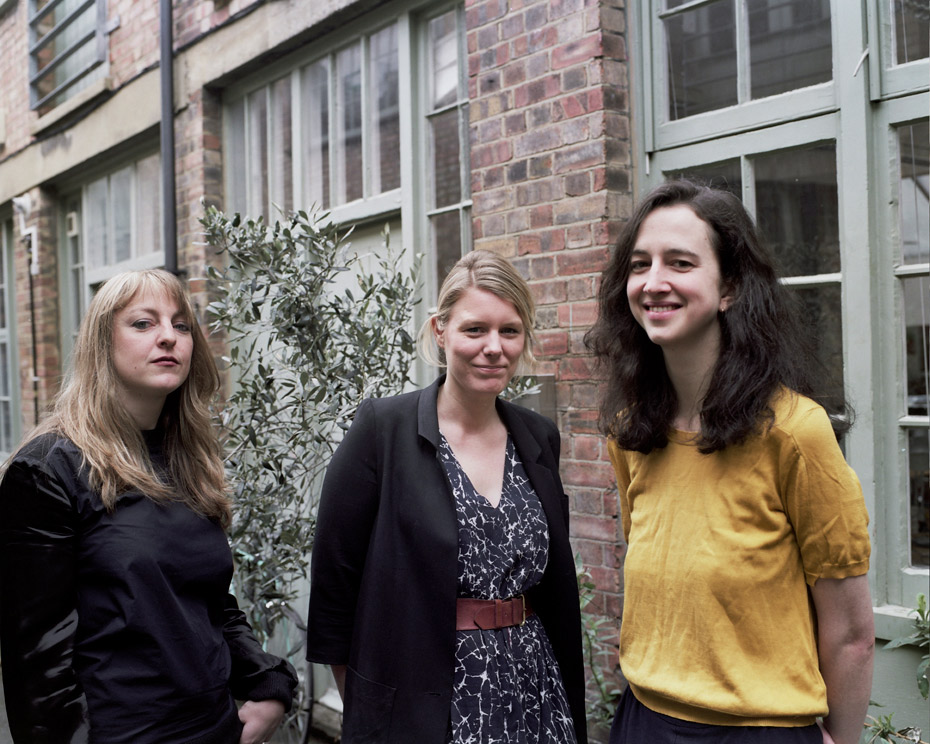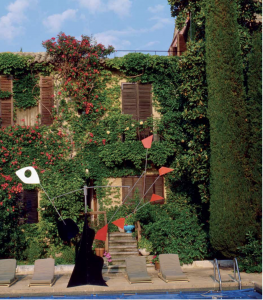- The prospering all-female practice took time to talk through their footprint on the architectural scene, and why it’s smart to stay small and fluid

Words Stephanie Kukulka
Photography Jasper FryHeaded by Tatiana von Preussen, Catherine Pease and Jessica Reynolds, vPPR is an all-female studio: although 40 percent of all architecture students are female, just 21 percent of practicing British architects are women according to the Architects Registration Board. This makes vPPR slightly unusual, and their success even more impressive given that they only established their firm four years ago.
Port met with vPPR at their East London studio, nestled between Bethnal Green Road and Cambridge Heath Road. A shared communal bricked courtyard contains a scattering of potted plants, resting bikes, and wooden-framed windows onto their creative community. The studio is filled with an abundance of building models, mood boards, architectural plans, aerial drawings, and book spines baring the titles from sustainable energy to domestic design.

 First and foremost they are friends, having met during their first year at Cambridge University. Life took them separately to New York where they agree – due to its inherent entrepreneurial spirit – they were immersed in an energetic landscape of productivity and optimism. This suited them perfectly as “Our clients are very entrepreneurial, young, and ambitious; they want something a bit more creative.” This very feature of their company has landed them a collaboration with a Russian-based architectural firm: “We are about the concept, and they’re about getting it built. The roles are very clearly defined, this difference helps,” Tatiana states. We agree of England’s tendency as a whole to be inherently conventional and pragmatic when it comes to architecture, and when glancing over vPPR’s projects – such as their Vaulted House project, with its golden vaulted roof-lights transferring natural light into the land-locked house – you are aware they are far from conventional.
First and foremost they are friends, having met during their first year at Cambridge University. Life took them separately to New York where they agree – due to its inherent entrepreneurial spirit – they were immersed in an energetic landscape of productivity and optimism. This suited them perfectly as “Our clients are very entrepreneurial, young, and ambitious; they want something a bit more creative.” This very feature of their company has landed them a collaboration with a Russian-based architectural firm: “We are about the concept, and they’re about getting it built. The roles are very clearly defined, this difference helps,” Tatiana states. We agree of England’s tendency as a whole to be inherently conventional and pragmatic when it comes to architecture, and when glancing over vPPR’s projects – such as their Vaulted House project, with its golden vaulted roof-lights transferring natural light into the land-locked house – you are aware they are far from conventional.
One of their most iconic projects is their Floating Cinema design – a competition themed “The Extra Ordinary”. It’s pink, reflective, floating, and was designed to show films both inside, onboard, and to larger groups seated on the banks of the canal. The starting point of their design was colour. “We wanted the colour to give it an identity, we wanted to make it memorable. Equally we wanted to compliment the green shades of the river banks, and brighten up the canal’s greys.”

- When first brainstorming the project the trio observed the immediate environmental context for inspiration: “Our forms were inspired by industrial engineering structures, such as the tunnels themselves, and water wheels.” They also looked to the folding elements of old film cameras, the silhouette of the camera obscura, and art deco film theatres.
Turning our attention to both completed and work in process projects, all of which line the walls of their naturally lit design studio, the lis includes Ott’s Yard, Pump-Pavilion, Coca-Cola Olympic Stretch Pavilion, and their Vaulted House. These architects are in no way bashful about their bold design tendencies and, in fact, speak passionately about their enthusiasm for “taking materials to an extreme.” Their Pump-Pavilion – inspired by exploding cakes, candy-floss, and marshmallows – is an example of this, whereby the enclosed sphere, made with reflexive PVC lined panels, will unfold to allow adults and children to walk on it, and then fold back up to enclose them in an iridescent inflatable sphere.
Ott’s Yard, located in North London, is the next project to be completed: two apartments, both with private gardens, and a shared communal space, will replace the pre-existing derelict joinery workshop. vPPR sourced the space solely for its redevelopment. As Tatiana explains, “London is full compact and awkward spaces; we focus on carving out the space, and making it all about light and sculptural qualities”.


 The main reason for this is to create a feeling of open space – a rarity in London. “You can’t put a price on light quality – an estate agent will just look at the square footage and the area,” Catherine says. Taking the space’s natural triangular geometry and overgrown environment, “the idea was to fill the space with more green,” before then “carv space out of it.” Equally important to the project was the creation of soft surfaces, in this case, via a sand foundation, aiding insufficient water run off.
The main reason for this is to create a feeling of open space – a rarity in London. “You can’t put a price on light quality – an estate agent will just look at the square footage and the area,” Catherine says. Taking the space’s natural triangular geometry and overgrown environment, “the idea was to fill the space with more green,” before then “carv space out of it.” Equally important to the project was the creation of soft surfaces, in this case, via a sand foundation, aiding insufficient water run off.
Jessica adds, “As a young practice you know you can do it, but there’s thousands of architects all planning for the same jobs; and if you’re a developer wanting to limit your risk, you’ll go for someone with 20 years experience”. Despite this statement, vPPR certainly aren’t affected by the negative business climate. Predominately this can be put down to their mobility and agility, as Tatiana states, “In the recession we’ve seen lots of different practices struggling, it is hard times, so we are keen to stay small and collaborate with larger companies, enabling us to move around with the economy; essentially, the smaller you are the more flexible you can be.”
Subscribe to Port Magazine annually and receive each issue to your door.
Get PORT in print



